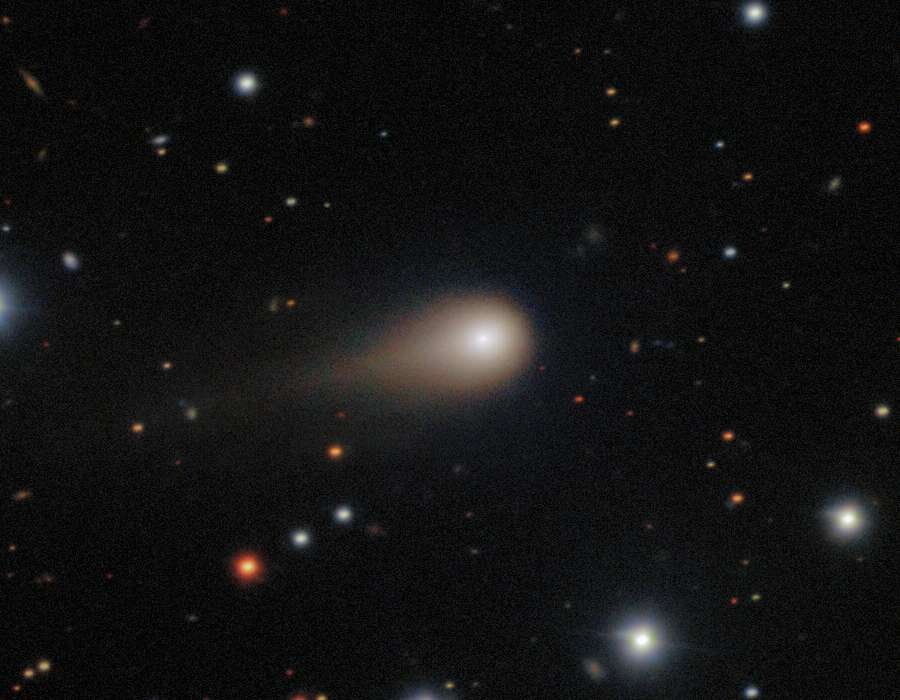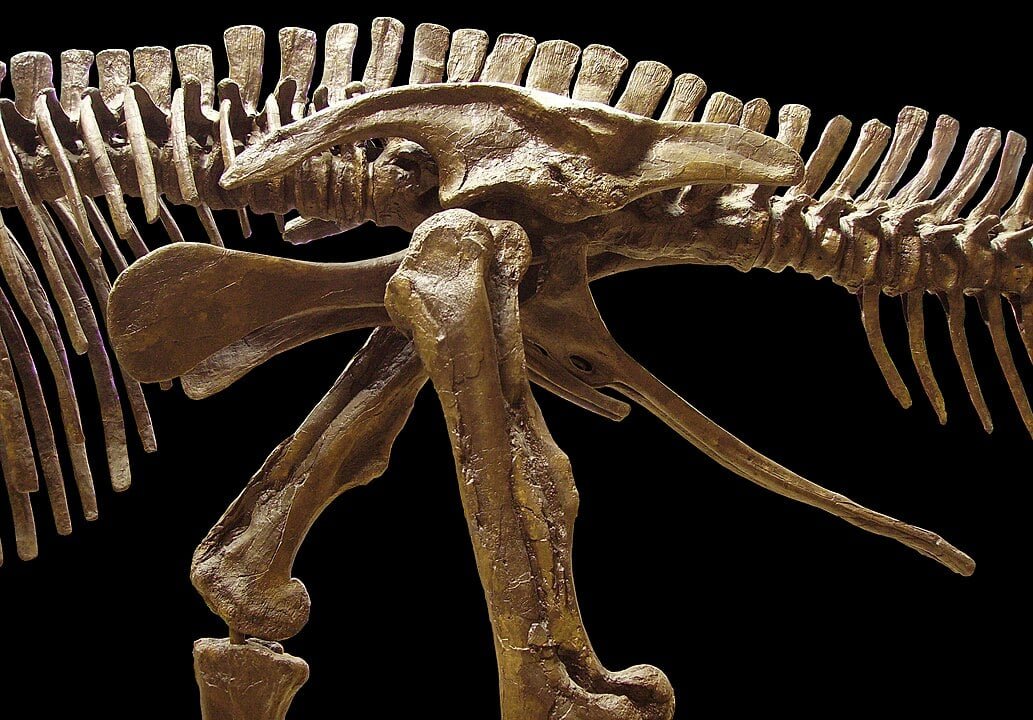
The interstellar object known as 3I/ATLAS has drawn intense attention since its discovery in early June. Its unusual trajectory into the solar system has led to speculation online, including claims that the object could be an alien spacecraft.
New images reveal the Manhattan-sized interstellar object is developing a tail, which one Harvard scientist says may indicate it is a maneuvering alien craft.
After displaying signs of a mysterious “anti-tail” since its appearance in the solar system in July, 3I/ATLAS now shows clear evidence of a true cometary tail, according to images captured in September by Spain’s Nordic Optical Telescope in the Canary Islands.
The new observations reveal material streaming off the 33-billion-ton object as it moves toward the sun, exposed to an estimated 33 gigawatts of solar radiation, Harvard astrophysicist Avi Loeb noted in a recent paper.
The shift from displaying an anti-tail to developing a conventional tail could point to “controlled maneuvering,” possibly signaling what one expert described as a high-impact Black Swan event — a rare and unpredictable occurrence with potentially far-reaching consequences.
According to Harvard astrophysicist Avi Loeb, 3I/ATLAS’s anti-tail consisted mainly of carbon dioxide and water, with traces of cyanide and an unusual nickel alloy never found in nature but known from human-made materials. Loeb suggested that if 3I/ATLAS were an alien spacecraft slowing down, the anti-tail could represent a “braking thrust” maneuver that naturally transitioned into a tail once the deceleration phase ended.
Earlier this week, the International Asteroid Warning Network (IAWN) added 3I/ATLAS to its official observation list, initiating scientific monitoring. In a statement, the group noted: “While it poses no threat, comet 3I/ATLAS presents an excellent opportunity for the IAWN community to conduct an observing exercise, given its prolonged visibility from Earth and its significant scientific interest.”
🚨 Harvard Scientist Says 3I/ATLAS Might Be an Alien Ship! 👽
A famous Harvard astronomer, Avi Loeb, believes that the huge space object called 3I/ATLAS might not be natural — it could be an alien mothership.
Here’s why he thinks so:
🌌 It’s much bigger than any interstellar… pic.twitter.com/BUgZmHXY0r
— Night Sky Today (@NightSkyToday) October 25, 2025
However, researchers say there is no evidence to support those ideas and point out that the object behaves like a natural comet.
Scientists stress that interstellar visitors are extremely rare. 3I/ATLAS is only the third confirmed object to arrive from beyond the Sun’s reach. Even with limited observations, the arrival of such a rare object has prompted both scientific interest and public imagination.
Conspiracy theories surround the interstellar object
The unusual trajectory of 3I/ATLAS has fueled rumors and conspiracy theories online. Some social media users and independent commentators suggest the object could be an alien spacecraft traveling through the solar system.
Hey Everybody
The newest and closest of 3I/Atlas as it passes Mars right this moment minutes ago. Its not a comet…its perfectly cylindrical. Its an interstellar craft of some kind…Mars Perseverance Sol 1643: Right Navigation Camera (Navcam). Image Credit: NASA/JPL-Caltech. pic.twitter.com/Lqjue3hVs4— Conan Doyle (@ConanDo08743902) October 4, 2025
Researchers say there is no evidence supporting those claims. They note that the object shows behavior typical of a natural comet, including a tail formed as it warms while approaching the Sun.
Scientists add that speculation often rises when an object enters from interstellar space. They say unusual motion does not indicate artificial design. While the public imagination may focus on extraterrestrial possibilities, astronomers emphasize that 3I/ATLAS continues to align with known cometary activity.
🚨🌎 “It’s doing things that Comets just don’t do”
“The size on Manhattan heading towards Earth on what appears to be a planned coordinated trajectory”
“It’s flying so fast”
“It comes from the same direction that the strongest ever radio signal from Space we ever previously… pic.twitter.com/317DvsYhei
— Concerned Citizen (@BGatesIsaPyscho) October 4, 2025
Researchers propose a chance to investigate
A new research proposal suggests there is a brief opportunity to study the comet directly. The paper, pre-published on arXiv and accepted by the Research Notes of the American Astronomical Society, was written by Samuel Grand of the Finnish Meteorological Institute and Geraint Jones of the European Space Agency. Their study explores using two spacecraft already traveling on separate missions.
The idea focuses on detecting ions from the rapidly growing tail of 3I/ATLAS. Reports describe the comet as “gushing” water, creating a plume of particles and ions stretching behind it. The comet recently moved out of view from Earth-based systems, but scientists expect the tail to continue expanding until the object reaches perihelion — its closest approach to the Sun — on October 29.
Two spacecraft placed by coincidence
The spacecraft involved are ESA’s Hera and NASA’s Europa Clipper. Hera is traveling to the Didymos–Dimorphos asteroid system, where NASA’s DART mission impacted in 2022. Europa Clipper is headed toward Jupiter’s moon Europa to study its thick ice and potential subsurface ocean.
Despite their unrelated destinations, both spacecraft will soon pass “downwind” of 3I/ATLAS — the region where the solar wind pushes the comet’s tail particles outward and into a curved path. Hera is expected to have a detection window from October 25 to November 1. Europa Clipper’s chance follows from October 30 to November 6.
Model predicts where to aim
To estimate the path of ions, the researchers used a model called “Tailcatcher.” It calculates the expected particle stream based on solar wind speed and predicts the closest point each spacecraft may reach near the tail’s core.
🚨 Breaking News 🚨
3I/ATLAS Executing an Oberth Maneuver?I just got off the phone with a physicist who has received new data from Dr. Avi Loeb. According to the latest trajectory readings, the interstellar object 3I/ATLAS has shifted its course by nearly one million miles from… pic.twitter.com/avij22VWB6
— Mav (@Mavmetax) October 25, 2025
Even with ideal conditions, Hera would miss by about 8.2 million kilometers (about 5.1 million miles). Europa Clipper would come within about 8 million kilometers (about 5 million miles). But particles from active comets can spread across millions of kilometers, leaving room for success.
Only one spacecraft has the right tools
The plan faces one major challenge: Hera carries no instruments that can detect ions or magnetic field changes. Europa Clipper does. It includes a plasma instrument and a magnetometer, both able to identify charged particles and observe the magnetic effects produced when a comet’s gas interacts with the solar wind.
Time is short for a scientific first
Mission teams have only a brief time to approve changes to the spacecraft’s operations. It remains uncertain whether they will receive and act on the proposal quickly enough.
Researchers say that if Europa Clipper — or possibly Hera — succeeds, it would mark the first direct sampling of the tail of an interstellar comet. It would be a milestone driven not by conspiracy theories, but by the chance to learn from a rare visitor passing through the solar system.

